Oracle Concepts 中英文对照版 (10g R2) V 1.1
更新:2010-02-06
文档生成:mcseman@sina.com
原创发布于:ITPub Oracle 入门与认证论坛:http://www.itpub.net/forum-4-1.html
帖子位置:http://www.itpub.net/thread-1201724-1-1.html
本文内容摘自 http://www.zw1840.com/的主页,原来网上流传的的 PDF 由于字体不统一,不方便打印。因此重新排版整
理。版权归相关组织和个人所有,仅用于学习。
注意!本文档采用加密处理,请使用最新版本的Acrobat Reader(目前为9.3)打开。
原文地址:http://www.zw1840.com/oracle/translation/concepts/index.htm
更新历史:
2009-08-09
2010-02-06
另外加上了生成文档的作者的联系方法。
V 1.0:首次发布版。
V 1.1:为方便打印,调整了一下字体大小和颜色(正文字体改为宋体 5 号,文字颜色改为黑色),为打印节省了约 100 页纸张。
1 / 900
�
Oracle Concepts 中文版 (10g R2)
Part I What Is Oracle?
Chapter 1, Introduction to the Oracle Database
Part II Oracle Database Architecture
Chapter 2, Data Blocks, Extents, and Segments
Chapter 3, Tablespaces, Datafiles, and Control Files
Chapter 4, Transaction Management
Chapter 5, Schema Objects
Chapter 6, Dependencies Among Schema Objects
Chapter 7, The Data Dictionary
Chapter 8, Memory Architecture
Chapter 9, Process Architecture
Chapter 10, Application Architecture
Chapter 11, Oracle Utilities
Chapter 12, Database and Instance Startup and Shutdown
Part III Oracle Database Features
Chapter 13, Data Concurrency and Consistency
Chapter 14, Manageability
Chapter 15, Backup and Recovery
Chapter 16, Business Intelligence
Chapter 17, High Availability
Chapter 18, Partitioned Tables and Indexes
Chapter 19, Content Management
Chapter 20, Database Security
Chapter 21, Data Integrity
2 / 900
第一部分 何为 Oracle?
第 1 章,Oracle 数据库简介
第二部分 Oracle 数据库体系结构
第 2 章,数据块,数据扩展,及数据段
第 3 章,表空间,数据文件,及控制文件
第 4 章,事务管理
第 5 章,方案对象
第 6 章,方案对象间的依赖关系
第 7 章,数据字典
第 8 章,内存体系结构
第 9 章,进程体系结构
第 10 章,应用体系结构
第 11 章,Oracle 工具
第 12 章,数据库及实例的启动与关闭
第三部分 Oracle 数据库特性
第 13 章,数据并发性与数据一致性
第 14 章,可管理性
第 15 章,备份与恢复
第 16 章,业务智能
第 17 章,高可用性
第 18 章,分区表及分区索引
第 19 章,内容管理
第 20 章,数据库安全
第 21 章,数据完整性
�
Chapter 22, Triggers
Chapter 23, Information Integration
Part IV Oracle Database Application Development
Chapter 24, SQL, PL/SQL, and Java
Chapter 25, Overview of Application Development Languages
Chapter 26, Native Datatypes
Chapter 27, Object Datatypes and Object Views
第 22 章,触发器
第 23 章,信息整合
第四部分 Oracle 数据库应用程序开发
第 24 章,SQL,PL/SQL,及 Java
第 25 章,应用程序开发语言概述
第 26 章,原生数据类型
第 27 章,对象数据类型及对象视图
3 / 900
�
1 Introduction to the Oracle Database
1 This chapter provides an overview of the Oracle database server. The
本章对 Oracle 数据库服务器进行概括性的介绍。本章的主题有:
topics include:
Oracle Database Architecture
Oracle Database Features
Oracle Database Application Development
Oracle 数据库体系结构
Oracle 数据库特性
Oracle 数据库应用开发
2 Oracle Database Architecture
1.1 Oracle 数据库体系结构
3 An Oracle database is a collection of data treated as a unit. The purpose
of a database is to store and retrieve related information. A database
server is the key to solving the problems of information management. In
general, a server reliably manages a large amount of data in a multiuser
environment so that many users can concurrently access the same data. All
this is accomplished while delivering high performance. A database server
also prevents unauthorized access and provides efficient solutions for
failure recovery.
4 Oracle Database is the first database designed for enterprise grid
computing, the most flexible and cost effective way to manage information
and applications. Enterprise grid computing creates large pools of
industry-standard, modular storage and servers. With this architecture,
each new system can be rapidly provisioned from the pool of components.
There is no need for peak workloads, because capacity can be easily added
or reallocated from the resource pools as needed.
An Oracle database is a collection of data treated as a unit. The purpose
of a database is to store and retrieve related information. 数据库服务
器是解决信息管理问题的核心组件。大体上说,数据库服务器的作用是可靠地管
理多用户环境下的大规模数据,使多用户可以并发地访问相同的数据,同时实现
系统的高性能。数据库服务器还要阻止未授权的操作,并提供高效的故障恢复解
决方案。
Oracle 数据库是第一个为企业网格计算而设计的数据库,她为管理信息和应用提
供了灵活、低成本、高效益的方式。企业网格计算把存储及服务能力转化为符合
业界标准、模块化的资源池 (resource pool)。在这种体系结构之下,新系统
可以从组件化的资源池中组合资源而迅速构成。企业也无需建设尖锋负荷系统
(peak workloads),因为计算能力可以在需要时轻松地从资源池中获得或重新
分配。
5 The database has logical structures and physical structures. Because the
physical and logical structures are separate, the physical storage of data
数据库具备逻辑结构和物理结构。因为物理和逻辑结构是分离的,所以数据物理
存储的变动不会影响基于逻辑存储结构的应用程序。
4 / 900
�
can be managed without affecting the access to logical storage structures.
6 The section contains the following topics:
本节包含以下主题:
Overview of Oracle Grid Architecture
Overview of Application Architecture
Overview of Physical Database Structures
Overview of Logical Database Structures
Overview of Schemas and Common Schema Objects
Overview of the Oracle Data Dictionary
Overview of the Oracle Instance
Overview of Accessing the Database
Overview of Oracle Utilities
Oracle 网格体系结构概述
应用体系结构概述
物理数据库结构概述
逻辑数据库结构概述
方案及常用的方案对象概述
Oracle 数据字典概述
Oracle 实例概述
数据库访问概述
Oracle 工具概述
7 Overview of Oracle Grid Architecture
1.1.1 Oracle 网格体系结构概述
8 Grid computing is a new IT architecture that produces more resilient and
lower cost enterprise information systems. With grid computing, groups
of independent, modular hardware and software components can be connected
and rejoined on demand to meet the changing needs of businesses.
9 The grid style of computing aims to solve some common problems with
enterprise IT: the problem of application silos that lead to under
utilized, dedicated hardware resources, the problem of monolithic,
unwieldy systems that are expensive to maintain and difficult to change,
and the problem of fragmented and disintegrated information that cannot
be fully exploited by the enterprise as a whole.
网格是新出现的 IT 体系结构,它可以提供更有弹性、成本更低的企业信息系统。
在网格中,众多独立的、模块化的软硬件组件可以随时地被联接和重组,以满足
业务 及业务变化的需要。
网格形式的计算系统是为了解决企业 IT 中的常见问题:由不同的应用系统独占
硬件资源而导致的资源利用率低下;系统过于庞大而导致的难以 改进、维护昂
贵;信息过于分散而导致的企业信息难以作为整体充分利用。
10 Benefits of Grid Computing Compared to other models of computing, IT
systems designed and implemented in the grid style deliver higher quality
of service, lower cost, and greater flexibility. Higher quality of service
results from having no single point of failure, a robust security
网格的优势 和其他体系结构相比,基于网格设计、实施的 IT 系统能够提供更
高质量的服务,更低的成本,更大的灵活性。更高质量的服务来源于网格不存在
单点脆弱性(single point of failure),健壮的安全基础结构,和基于策略
的集中化管理方式。更低成本来源于软硬件资源利用水平的提高和管理、维护成
5 / 900
�
infrastructure, and centralized, policy-driven management. Lower costs
derive from increasing the utilization of resources and dramatically
reducing management and maintenance costs. Rather than dedicating a stack
of software and hardware to a specific task, all resources are pooled and
allocated on demand, thus eliminating under utilized capacity and
redundant capabilities. Grid computing also enables the use of smaller
individual hardware components, thus reducing the cost of each individual
component and providing more flexibility to devote resources in
accordance with changing needs.
本的显著降低。在以往的体系结构中,一个 完成特定任务的系统要独占一系列
软硬件资源,而网格体系中所有资源被统一储备随需分配,这就消除了资源利用
不足和资源冗余的现象。网格可以使用更小型的硬件组件, 这降低了每个组件
的成本并使用户可根据需求的变化更灵活地分配资源。
11 Grid Computing Defined
1.1.1.1 网格的定义
12 The grid style of computing treats collections of similar IT resources
holistically as a single pool, while exploiting the distinct nature of
individual resources within the pool. To address simultaneously the
problems of monolithic systems and fragmented resources, grid computing
achieves a balance between the benefits of holistic resource management
and flexible independent resource control. IT resources managed in a grid
include:
网格将相似的 IT 资源整体地看做一个池,同时充分发挥池中每一个个体的独特
功能。网格实现了整体资源管理和独立资源控制的平衡,解决了庞大系统和分散
资源的矛盾。在网格中管理的 IT 资源包括:
基础设施:组成数据存储、软件执行环境的硬件和软件。
应用:定义业务过程(business process)的程序逻辑(program logic)
和流程(flow)。
信息:蕴含于各种数据中用于指导业务的数据的内在含义
Infrastructure: the hardware and software that create a data
storage and program execution environment
Applications: the program logic and flow that define specific
business processes
Information: the meanings inherent in all different types of data
used to conduct business
13 Core Tenets of Grid Computing Two core tenets uniquely distinguish grid
computing from other styles of computing, such as mainframe,
client-server, or multi-tier: virtualization and provisioning.
With virtualization, individual resources (e.g. computers, disks,
application components and information sources) are pooled together
网格的核心理念 与大型机、C/S 结构、多层结构等以往的体系结构不同,网格有
两个独特的核心理念:虚拟化和资源供给。
所谓虚拟化,就是将各类独立的资源(计算机,磁盘,应用组件,信息源等)
视为一个池,经过抽象后提供给资源消费者(用户或软件程序)。虚拟化意
味着打破了资源提供者和消费者之间的硬性联系(固化在程序代码 中的
6 / 900
�
by type then made available to consumers (e.g. people or software
programs) through an abstraction. Virtualization means breaking
hard-coded connections between providers and consumers of resources,
and preparing a resource to serve a particular need without the
consumer caring how that is accomplished.
With provisioning, when consumers request resources through a
virtualization layer, behind the scenes a specific resource is
identified to fulfill the request and then it is allocated to the
consumer. Provisioning as part of grid computing means that the system
determines how to meet the specific need of the consumer, while
optimizing operation of the system as a whole.
14 The specific ways in which information, application or infrastructure
resources are virtualized and provisioned are specific to the type of
resource, but the concepts apply universally. Similarly, the specific
benefits derived from grid computing are particular to each type of
resource, but all share the characteristics of better quality, lower costs
and increased flexibility.
15 Infrastructure Grid Infrastructure grid resources include hardware
resources such as storage, processors, memory, and networks as well as
software designed to manage this hardware, such as databases, storage
management, system management, application servers, and operating
systems.
16 Virtualization and provisioning of infrastructure resources mean pooling
resources together and allocating to the appropriate consumers based on
policies. For example, one policy might be to dedicate enough processing
power to a web server that it can always provide sub-second response time.
That rule could be fulfilled in different ways by the provisioning
software in order to balance the requests of all consumers.
(hard-coded)),在满足消费者对资源需求的同时无需消费者关心资源供
给是如何实现的。
所谓资源供给,就是当消费者通过虚拟层请求资源时,网格在幕后找出满足
需求的资源并分配给消费者。在网格中供给意味着系统负责决定如何满足消
费者的特定需求,同时还要从整体上对系统 运转进行优化。
信息、应用、基础设施资源的虚拟化与资源供给的具体方法各不相同,但思路是
相通的。类似的,通过网格供给各种资源给用户带来的的益处也各不相同,但都
具备了高 质量、低造价及灵活的特点。
基础设施网格 基础设施网格资源包括存储、处理器、内存、网络等硬件资源,
及管理这些硬件的软件资源,如数据库、存储管理、应用服务器和操作系统。
基础设施网格的虚拟化与资源供给意味着将所有资源视为池,并根据预定策略分
配给适当的消费者。例如,针对 web 服务器的策略要提供足够的处理能力来保证
响应时间。资源供给管理软件根据实际情况选择适当的方式实现预定策略,以满
足所有消费者对资源的请求。
7 / 900
�
17 Treating infrastructure resources as a single pool and allocating those
resources on demand saves money by eliminating under utilized capacity
and redundant capabilities. Managing hardware and software resources
holistically reduces the cost of labor and the opportunity for human
error.
18 Spreading computing capacity among many different computers and spreading
storage capacity across multiple disks and disk groups removes single
points of failure so that if any individual component fails, the system
as a whole remains available. Furthermore, grid computing affords the
option to use smaller individual hardware components, such as blade
servers and low cost storage, which enables incremental scaling and
reduces the cost of each individual component, thereby giving companies
more flexibility and lower cost.
19 Infrastructure is the dimension of grid computing that is most familiar
and easy to understand, but the same concepts apply to applications and
information.
20 Applications Grid Application resources in the grid are the encodings of
business logic and process flow within application software. These may
be packaged applications or custom applications, written in any
programming language, reflecting any level of complexity. For example,
the software that takes an order from a customer and sends an
acknowledgement, the process that prints payroll checks, and the logic
that routes a particular customer call to a particular agent are all
application resources.
21 Historically, application logic has been intertwined with user interface
code, data management code, and process or page flow and has lacked
well-defined interfaces, which has resulted in monolithic applications
that are difficult to change and difficult to integrate.
将基础设施资源视为一个池并随需分配,提高了资源的利用水平,减少了冗余资
源,节约了软硬件购买资金。对软硬件资源整体的管理降低 了人力成本及人为
错误发生的机会。
将计算能力分散于不同的计算机,将存储能力分散于多个磁盘和磁盘组,消除了
系统的单点脆弱性,即保证系统中的个体组件发生故障时系统整体还能保持可
用。此外,网格体系可以基于众多小型的硬件组件,例如刀片服务器和低成本存
储器,这增加了系统的伸缩性、降低硬件组件的成本,使企业 获取更低的成本
及更大的灵活性。
基础设施是网格体系中最为人熟知也最易理解的范畴,其实类似的概念也适用于
应用和信息。
应用网格 网格中的应用资源是蕴含于应用软件中反映业务逻辑(business
logic)和处理流程(process flow)的程序代码。 这些应用软可以是套装的,
也可以是定制的,可以以任何编程语言实现,表现任何层次的业务复杂度。举例
来说,一个接受客户订单并发送反馈的程序,一个打印薪水册的工作流程,或一
个 将特定客户的服务请求传递给特定员工的逻辑,都属于应用资源。
历史上,应用逻辑往往和用户界面代码、数据管理代码、流程控制代码、页面流
转代码交织在一起,并且缺乏完善的接口,这导致的庞大的孤岛系统,难于修改,
难于集成。
8 / 900
�

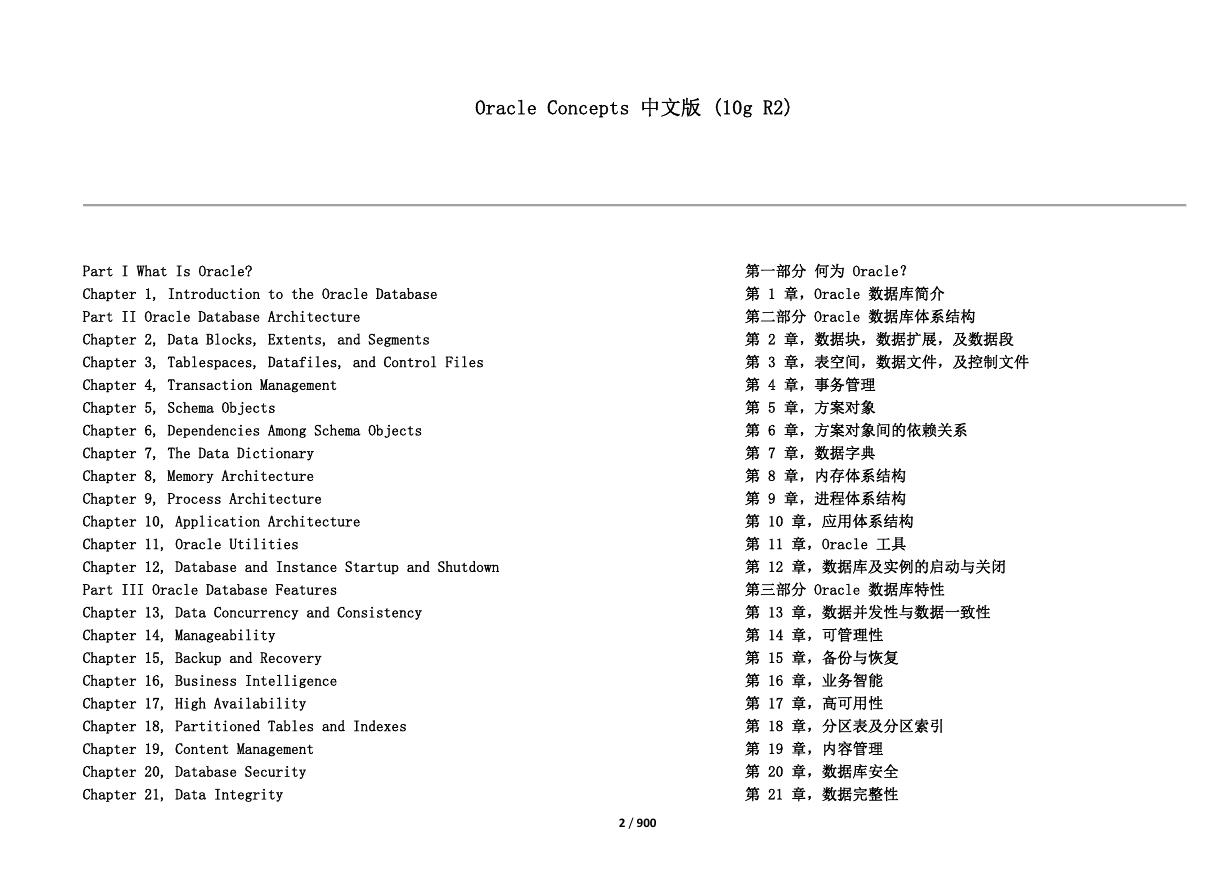
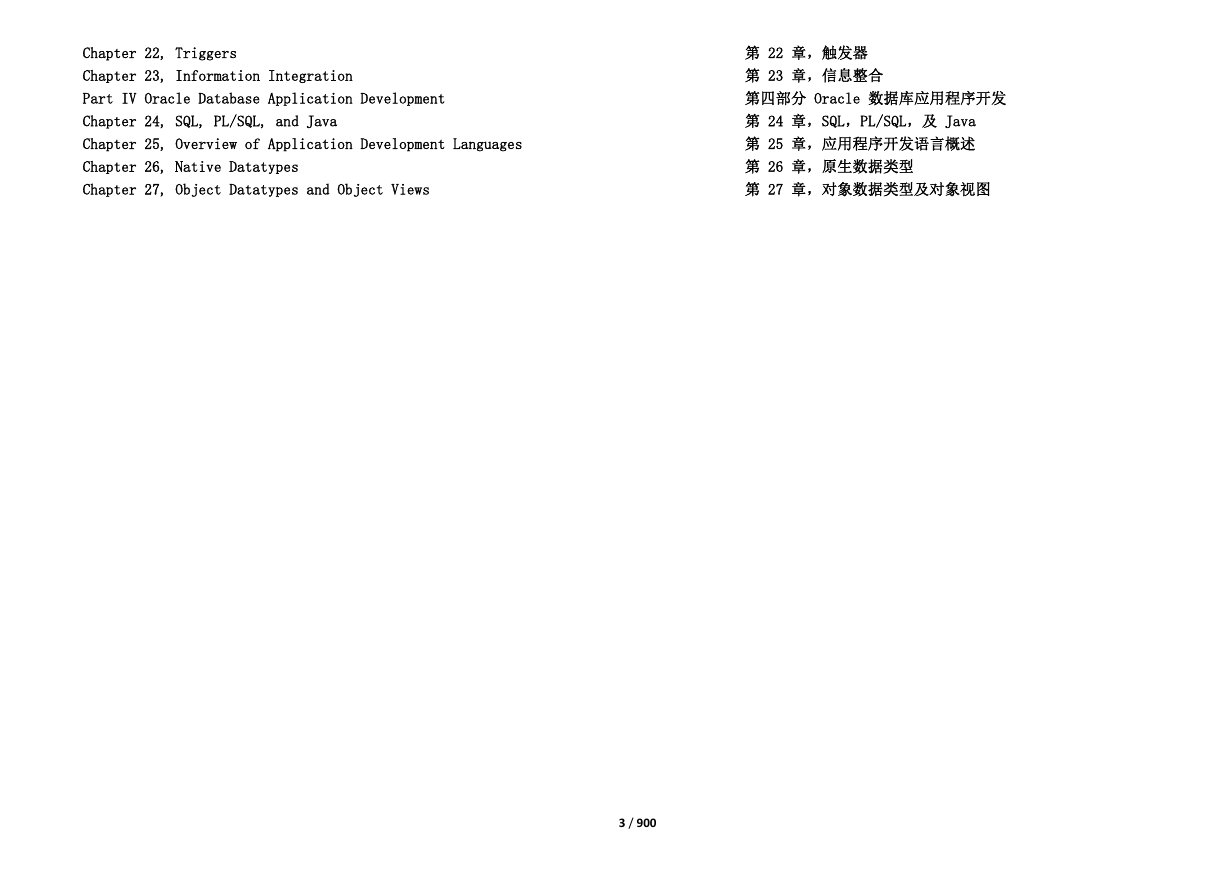
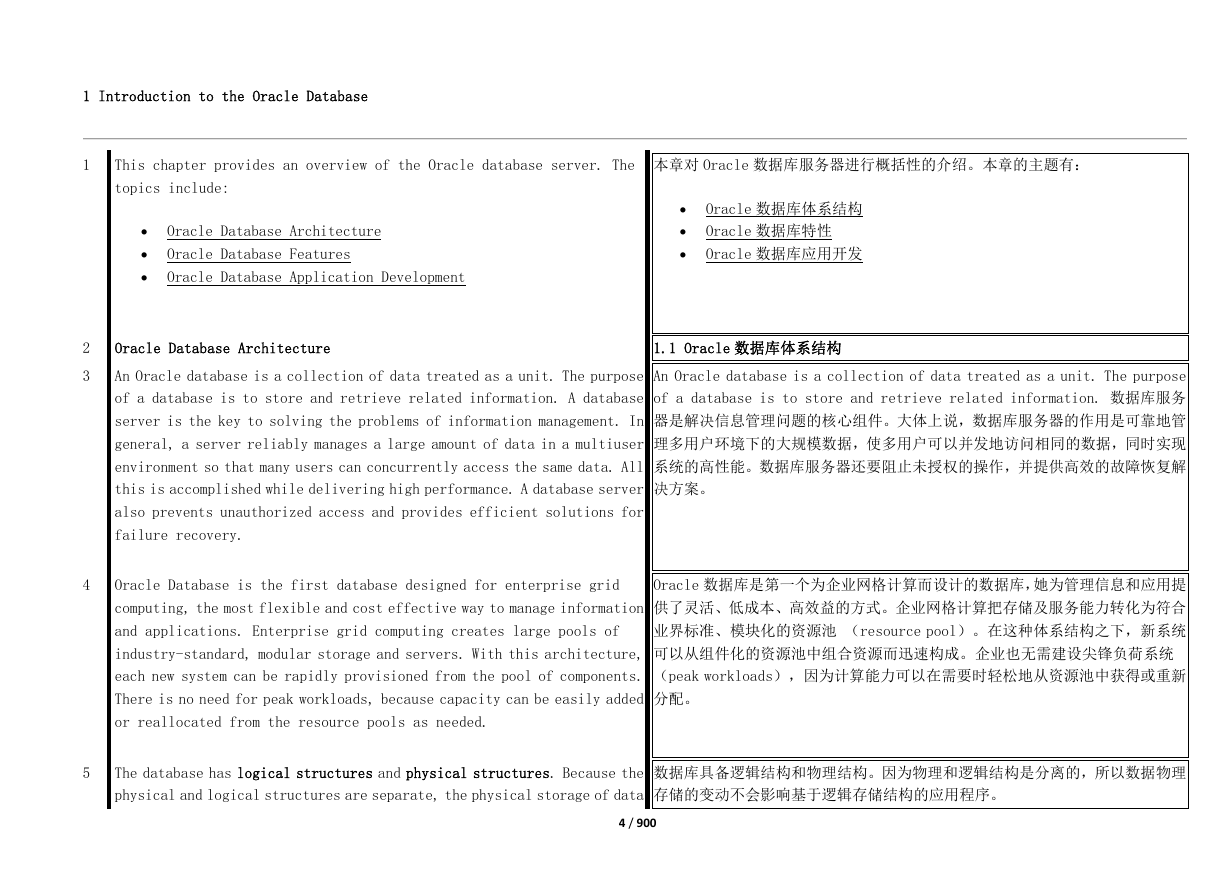

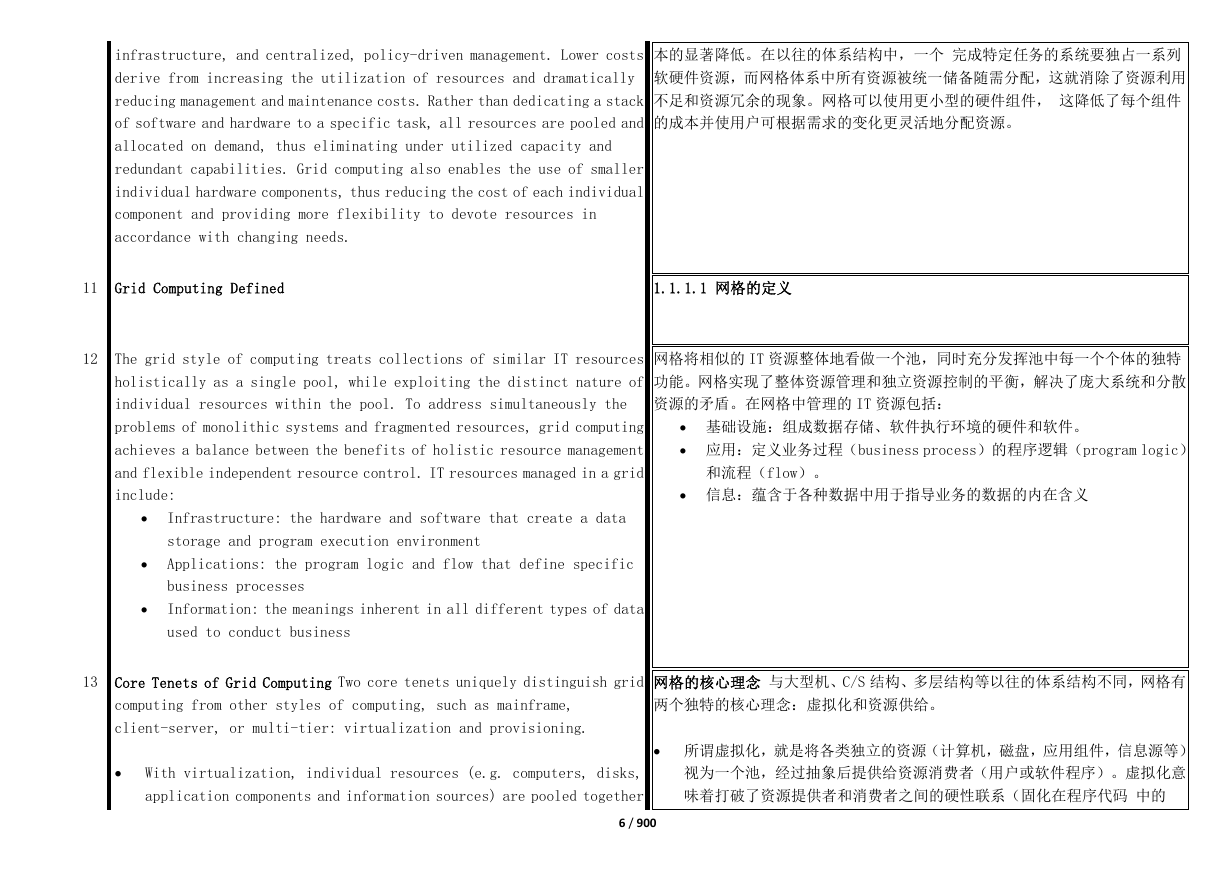

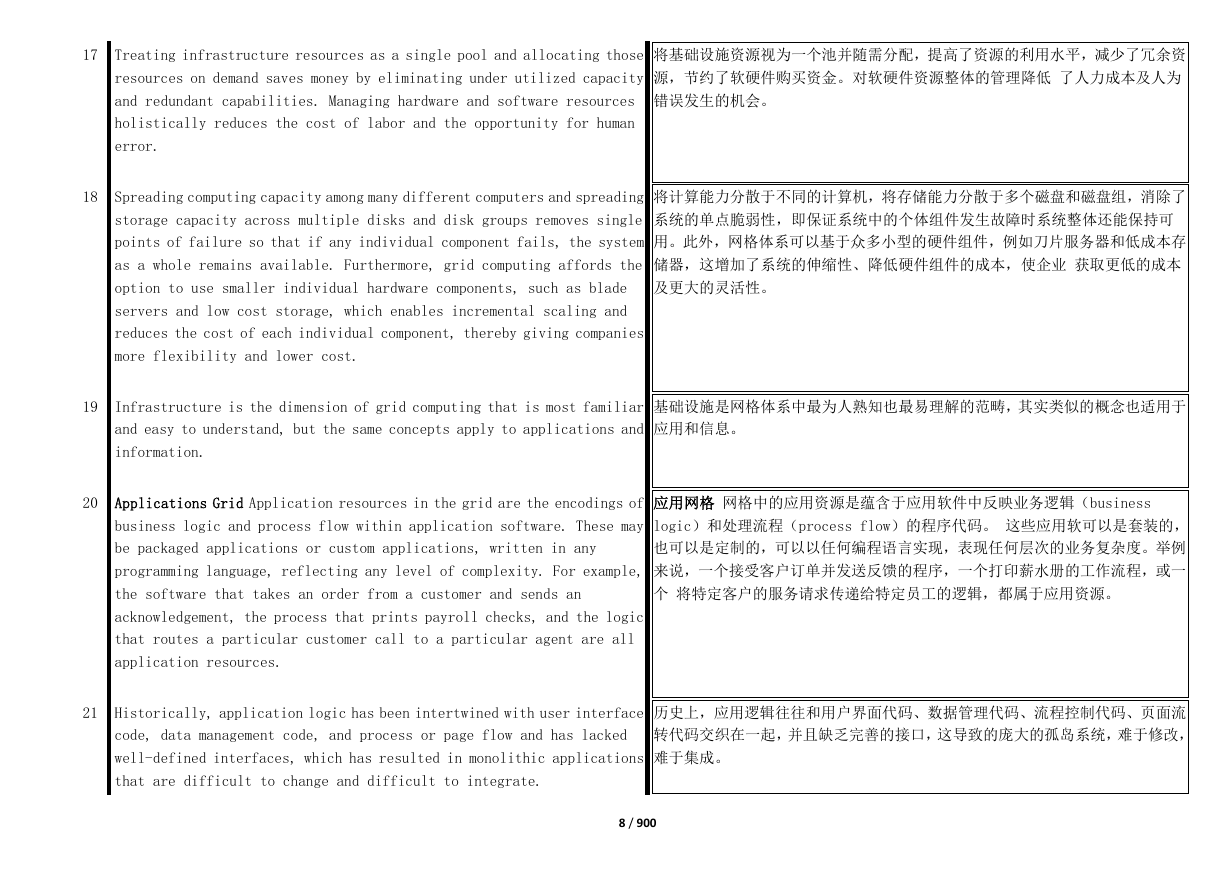








 2023年江西萍乡中考道德与法治真题及答案.doc
2023年江西萍乡中考道德与法治真题及答案.doc 2012年重庆南川中考生物真题及答案.doc
2012年重庆南川中考生物真题及答案.doc 2013年江西师范大学地理学综合及文艺理论基础考研真题.doc
2013年江西师范大学地理学综合及文艺理论基础考研真题.doc 2020年四川甘孜小升初语文真题及答案I卷.doc
2020年四川甘孜小升初语文真题及答案I卷.doc 2020年注册岩土工程师专业基础考试真题及答案.doc
2020年注册岩土工程师专业基础考试真题及答案.doc 2023-2024学年福建省厦门市九年级上学期数学月考试题及答案.doc
2023-2024学年福建省厦门市九年级上学期数学月考试题及答案.doc 2021-2022学年辽宁省沈阳市大东区九年级上学期语文期末试题及答案.doc
2021-2022学年辽宁省沈阳市大东区九年级上学期语文期末试题及答案.doc 2022-2023学年北京东城区初三第一学期物理期末试卷及答案.doc
2022-2023学年北京东城区初三第一学期物理期末试卷及答案.doc 2018上半年江西教师资格初中地理学科知识与教学能力真题及答案.doc
2018上半年江西教师资格初中地理学科知识与教学能力真题及答案.doc 2012年河北国家公务员申论考试真题及答案-省级.doc
2012年河北国家公务员申论考试真题及答案-省级.doc 2020-2021学年江苏省扬州市江都区邵樊片九年级上学期数学第一次质量检测试题及答案.doc
2020-2021学年江苏省扬州市江都区邵樊片九年级上学期数学第一次质量检测试题及答案.doc 2022下半年黑龙江教师资格证中学综合素质真题及答案.doc
2022下半年黑龙江教师资格证中学综合素质真题及答案.doc